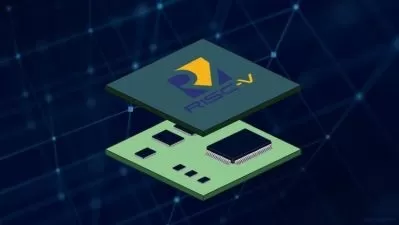Mastering Power Electronics using Plecs simulations
Haider Zaman
2:05:04
Description
Building blocks of power electronics
What You'll Learn?
- To be able to comprehend the use of switching devices like diode, SCR and transistors for power conversion conversion.
- To be able to comprehend the current/voltage waveforms.
- To be able to simulate and analyze converters using Plecs software
- To be able to analyze rectifiers using knowledge of circuit analysis.
Who is this for?
What You Need to Know?
More details
DescriptionSimulation is paramount in power electronics because it allows us to experiment with complex converter topologies, test various scenarios, and optimize designs without the constraints of physical prototypes. It's a virtual laboratory that empowers engineers. Plecs is a powerful simulation tool with a Simulink-like interface, enabling you to simulate and visualize the behavior of various power converter topologies, allowing you to gain practical insights into their operation. The key to mastering any software is practicing examples. Therefore, Plecs simulation exercises are given to reinforce understanding and hands-on application of the concepts covered. The course is divided into the following modules:
Module 1: Introduction to Power Converter
Basics of power electronics and power conversion
Analysis tools include Fourier series, total harmonic distortion (THD), power factor, average and rms value, and periodic steady-state.
Module 2: Introduction to Plecs
Installation of Plexim Plecs
Building and simulating a simple Plecs model
Editing parameters of blocks
Editing scope parameters
The first electrical circuit in Plecs
Half-wave rectifier simulation
Using Plecs schematic and waveform in the report
Exporting waveform as CSV data and importing it into Matlab for plotting
Fourier spectrum of a waveform
Average and rms value
The hold trace option for tuning a parameter
Module 3: C Programming in Plecs: The C-script
Introduction to C-script block
Using parameters in C-script block
Multiplexed inputs to C-script block
Module 4: Introduction to AC-DC Converters
Introduction and classification of AC-DC converters
Half-wave diode rectifier with resistive load
The effect of inductive load in half-wave diode rectifier
Single-phase bridge rectifier
Module 5: Introduction to DC-DC converters
Introduction to DC-DC buck converter and implementation in Plecs
Introduction to pulse-width modulation
Design of a DC-DC buck converter
Frequency response using impulse response analysis in Plecs
Designing a feedback controller for a Buck converter
The transfer function of converter using system identification
Digital control for Buck converter
Sinusoidal pulse-width modulation
Module 6:Â Texas instruments TIÂ C2000 Microcontroller programming using Plecs
Introduction to TI C2000 microcontroller
Blink Led Using GPIO
GPIO in input and output mode
Pulse width modulation (PWM) using C2000 mcu, External mode operation
TI C2000 DAC and ADC
Who this course is for:
- For Electrical/Electronics/Computer students at undergraduate and postgraduate level. Also those professionals who want to learn Plecs.
Simulation is paramount in power electronics because it allows us to experiment with complex converter topologies, test various scenarios, and optimize designs without the constraints of physical prototypes. It's a virtual laboratory that empowers engineers. Plecs is a powerful simulation tool with a Simulink-like interface, enabling you to simulate and visualize the behavior of various power converter topologies, allowing you to gain practical insights into their operation. The key to mastering any software is practicing examples. Therefore, Plecs simulation exercises are given to reinforce understanding and hands-on application of the concepts covered. The course is divided into the following modules:
Module 1: Introduction to Power Converter
Basics of power electronics and power conversion
Analysis tools include Fourier series, total harmonic distortion (THD), power factor, average and rms value, and periodic steady-state.
Module 2: Introduction to Plecs
Installation of Plexim Plecs
Building and simulating a simple Plecs model
Editing parameters of blocks
Editing scope parameters
The first electrical circuit in Plecs
Half-wave rectifier simulation
Using Plecs schematic and waveform in the report
Exporting waveform as CSV data and importing it into Matlab for plotting
Fourier spectrum of a waveform
Average and rms value
The hold trace option for tuning a parameter
Module 3: C Programming in Plecs: The C-script
Introduction to C-script block
Using parameters in C-script block
Multiplexed inputs to C-script block
Module 4: Introduction to AC-DC Converters
Introduction and classification of AC-DC converters
Half-wave diode rectifier with resistive load
The effect of inductive load in half-wave diode rectifier
Single-phase bridge rectifier
Module 5: Introduction to DC-DC converters
Introduction to DC-DC buck converter and implementation in Plecs
Introduction to pulse-width modulation
Design of a DC-DC buck converter
Frequency response using impulse response analysis in Plecs
Designing a feedback controller for a Buck converter
The transfer function of converter using system identification
Digital control for Buck converter
Sinusoidal pulse-width modulation
Module 6:Â Texas instruments TIÂ C2000 Microcontroller programming using Plecs
Introduction to TI C2000 microcontroller
Blink Led Using GPIO
GPIO in input and output mode
Pulse width modulation (PWM) using C2000 mcu, External mode operation
TI C2000 DAC and ADC
Who this course is for:
- For Electrical/Electronics/Computer students at undergraduate and postgraduate level. Also those professionals who want to learn Plecs.
User Reviews
Rating
Haider Zaman
Instructor's Courses
Udemy
View courses Udemy- language english
- Training sessions 16
- duration 2:05:04
- Release Date 2023/12/07











